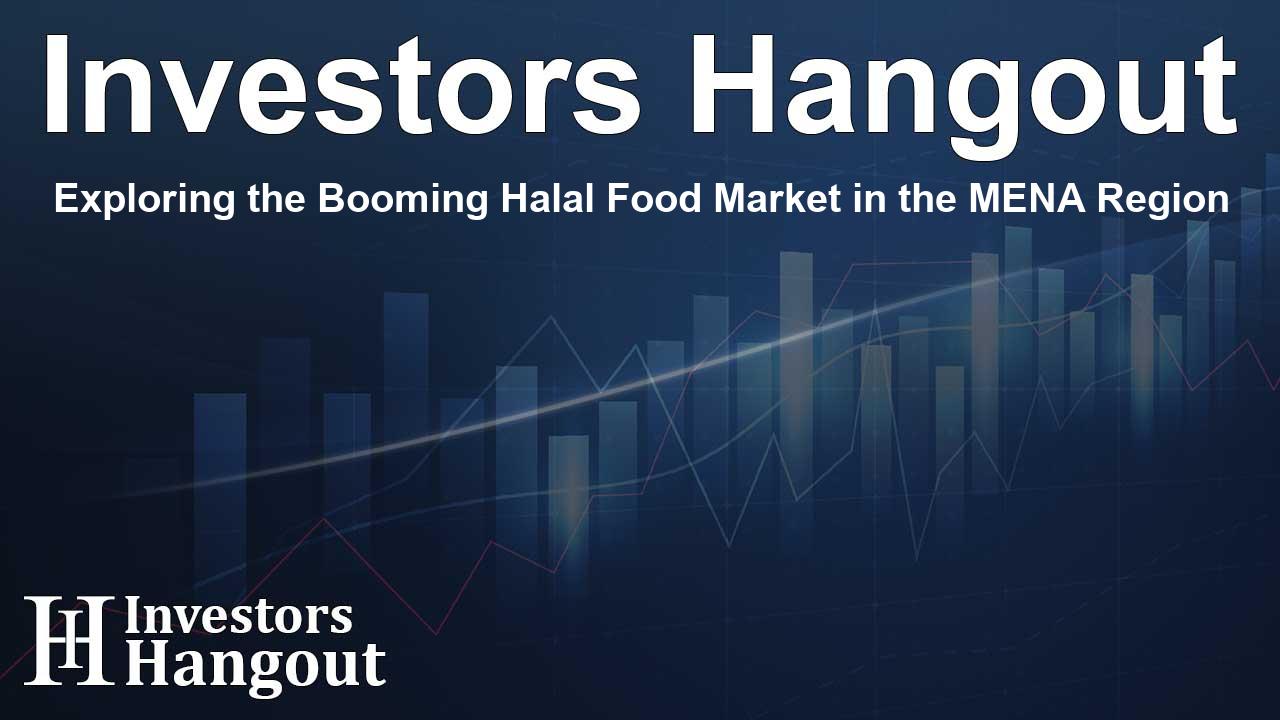Exploring the Booming Halal Food Market in the MENA Region

Rising Trends in the Halal Food Industry
The halal food industry is gaining momentum across the MENA region, fueled by an increase in consumer demand for ethical and health-conscious food choices. Key nations are establishing themselves as major players in this burgeoning market, which is projected to reach a remarkable milestone in the upcoming years.
Market Growth Projections
The halal food market in the MENA region is forecast to soar, anticipated to reach around $380 billion in the coming years. This significant growth is attributed to a compound annual growth rate (CAGR) of 7.1% during the specified period. Such figures indicate a robust market environment, highlighting the potential for businesses and stakeholders in the halal food sector.
Key Drivers of Market Growth
Several factors contribute to the ongoing expansion of the halal food market. These include:
Increasing Muslim Population
One of the most notable drivers is the growing Muslim population in the region. As more individuals adhere to religious dietary practices, the demand for halal food remains consistently strong. This demographic shift is critical in ensuring a substantial and dedicated consumer base for halal-certified products.
E-Commerce Opportunities
The rise of digital technology has made halal products more accessible than ever before. Online food delivery services and e-commerce platforms are bridging the gap between consumers and halal product availability, greatly enhancing convenience, especially among the tech-savvy youth.
Investment Surge
Investment in the halal food sector is witnessing a significant uptick. Both government initiatives and private investors are channeling resources into this growing market, enhancing infrastructure, certification processes, and innovations. This financial backing is essential for local producers who aspire to elevate their profile within the global halal market.
Consumer Preferences and Trends
As the halal food market evolves, consumer preferences are shifting in favor of ethical and sustainable eating habits. This aligns perfectly with global trends toward health consciousness. The rising awareness of food safety and ethical consumption among consumers underscores the importance of transparency and accountability in food sourcing.
Influence of Digital Trends
Digital media is playing an increasingly vital role in shaping consumer choices. With the advent of social media platforms, trends surrounding halal products are rapidly influencing purchasing decisions, especially among millennials and Gen Z consumers who are often guided by online recommendations.
Noteworthy Startups in the Space
The emergence of innovative startups like Halal Products Development Company (HPDC) signifies the growing commitment to creating a robust halal ecosystem. Based in a key MENA nation, HPDC is devoted to supporting the localization of halal production while facilitating international players to establish their operations within the market.
Conclusion: A Bright Future for the Halal Food Industry
The halal food industry is undeniably positioned for a prosperous future. As consumer demands evolve and more players enter the market, stakeholders can look forward to unprecedented opportunities. The intersection of marketing strategy and technological advancement will shape this industry’s growth, making it an exciting space to watch.
Frequently Asked Questions
What are the growth projections for the halal food market in MENA?
The halal food market in the MENA region is projected to reach about $380 billion, with a CAGR of 7.1% in the upcoming years.
What factors are contributing to the market's growth?
Factors such as an expanding Muslim population, the rise of e-commerce, and increasing investments are driving the market's growth.
How is digital influence shaping food choices?
Social media trends and online influencers are significantly impacting millennials' and Gen Z's decisions regarding halal food products.
What role do startups play in the halal sector?
Startups like HPDC are enhancing halal production capabilities and promoting sustainable development within the industry.
What is the main consumer base for halal products?
The primary consumer base includes the growing Muslim population, alongside individuals interested in ethical and clean eating practices.
About The Author
Contact Lucas Young privately here. Or send an email with ATTN: Lucas Young as the subject to contact@investorshangout.com.
About Investors Hangout
Investors Hangout is a leading online stock forum for financial discussion and learning, offering a wide range of free tools and resources. It draws in traders of all levels, who exchange market knowledge, investigate trading tactics, and keep an eye on industry developments in real time. Featuring financial articles, stock message boards, quotes, charts, company profiles, and live news updates. Through cooperative learning and a wealth of informational resources, it helps users from novices creating their first portfolios to experts honing their techniques. Join Investors Hangout today: https://investorshangout.com/
The content of this article is based on factual, publicly available information and does not represent legal, financial, or investment advice. Investors Hangout does not offer financial advice, and the author is not a licensed financial advisor. Consult a qualified advisor before making any financial or investment decisions based on this article. This article should not be considered advice to purchase, sell, or hold any securities or other investments. If any of the material provided here is inaccurate, please contact us for corrections.
